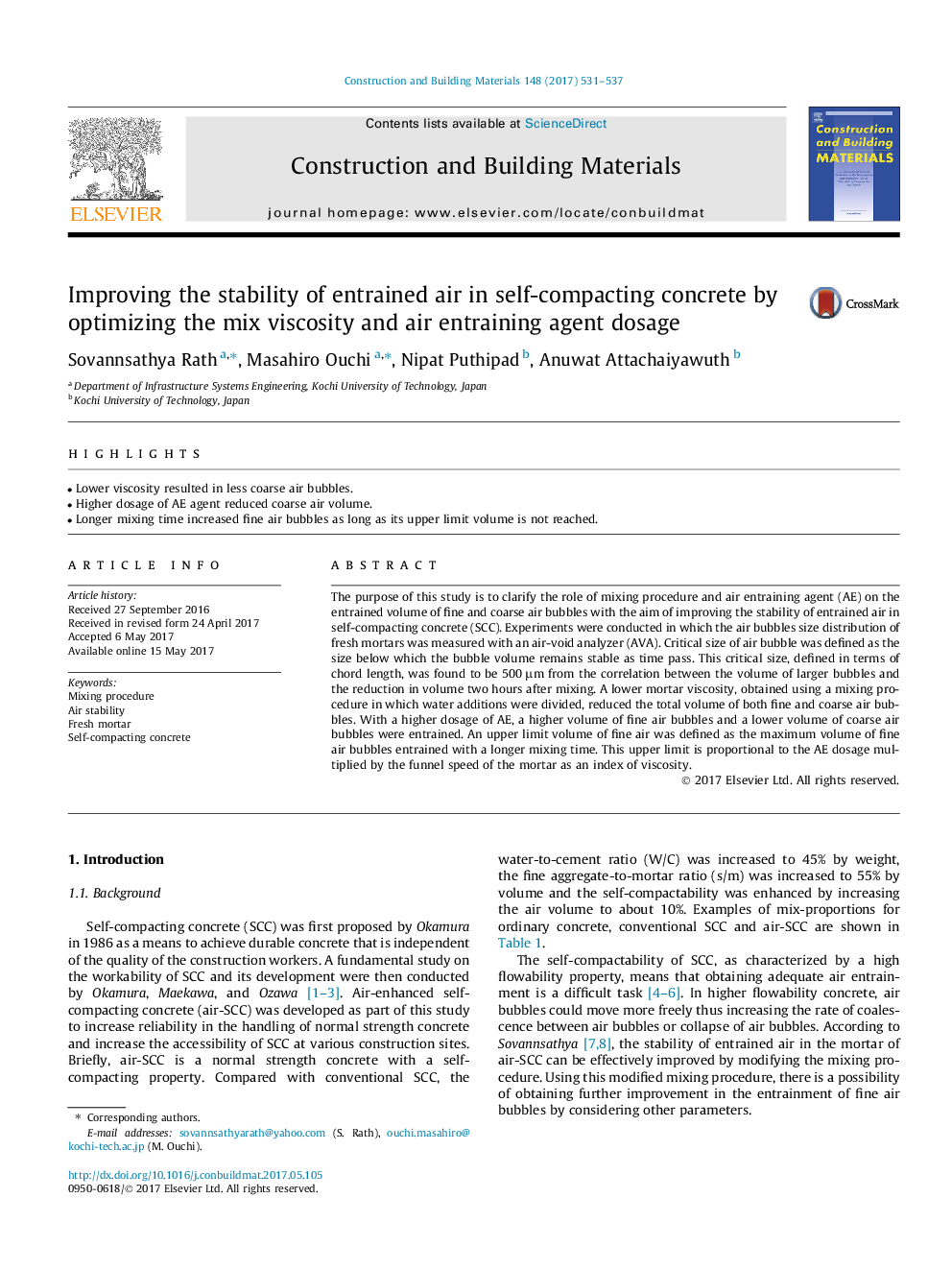| Article ID | Journal | Published Year | Pages | File Type |
|---|---|---|---|---|
| 6480369 | Construction and Building Materials | 2017 | 7 Pages |
â¢Lower viscosity resulted in less coarse air bubbles.â¢Higher dosage of AE agent reduced coarse air volume.â¢Longer mixing time increased fine air bubbles as long as its upper limit volume is not reached.
The purpose of this study is to clarify the role of mixing procedure and air entraining agent (AE) on the entrained volume of fine and coarse air bubbles with the aim of improving the stability of entrained air in self-compacting concrete (SCC). Experiments were conducted in which the air bubbles size distribution of fresh mortars was measured with an air-void analyzer (AVA). Critical size of air bubble was defined as the size below which the bubble volume remains stable as time pass. This critical size, defined in terms of chord length, was found to be 500 μm from the correlation between the volume of larger bubbles and the reduction in volume two hours after mixing. A lower mortar viscosity, obtained using a mixing procedure in which water additions were divided, reduced the total volume of both fine and coarse air bubbles. With a higher dosage of AE, a higher volume of fine air bubbles and a lower volume of coarse air bubbles were entrained. An upper limit volume of fine air was defined as the maximum volume of fine air bubbles entrained with a longer mixing time. This upper limit is proportional to the AE dosage multiplied by the funnel speed of the mortar as an index of viscosity.
